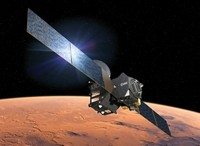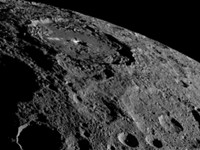Advertisement
Grab your lab coat. Let's get started
Welcome!
Welcome!
Create an account below to get 6 C&EN articles per month, receive newsletters and more - all free.
It seems this is your first time logging in online. Please enter the following information to continue.
As an ACS member you automatically get access to this site. All we need is few more details to create your reading experience.
Not you? Sign in with a different account.
Not you? Sign in with a different account.
ERROR 1
ERROR 1
ERROR 2
ERROR 2
ERROR 2
ERROR 2
ERROR 2
Password and Confirm password must match.
If you have an ACS member number, please enter it here so we can link this account to your membership. (optional)
ERROR 2
ACS values your privacy. By submitting your information, you are gaining access to C&EN and subscribing to our weekly newsletter. We use the information you provide to make your reading experience better, and we will never sell your data to third party members.
Physical Chemistry
Additional evidence supports suspected cryovolcanism on Ceres
Dawn spacecraft sends back images that show possible eruptions of water ice and salts on the dwarf planet
by Elizabeth K. Wilson
September 5, 2016
| A version of this story appeared in
Volume 94, Issue 35
Studies of the surface of the dwarf planet Ceres show evidence of long-postulated “cryovolcanism” in which volcanoes spew cryomagma—slurries of water, ice, and volatiles—rather than lava. Many icy moons, such as Saturn’s Enceladus and Jupiter’s Europa, have features suggesting cryovolcanism. But the identity of that geological activity hasn’t been confirmed. The new data come from NASA’s Dawn spacecraft, which has been orbiting Ceres since March 2015 as it floats in the asteroid belt between Mars and Jupiter. A set of six papers published in Science last week includes an analysis from a team led by NASA Goddard Space Flight Center scientist Ottaviano Ruesch. The researchers studied an area on Ceres known as Ahuna Mons, which they believe was formed by relatively recent eruptions of materials involving carbonates, water ice, and chlorine salts (DOI: 10.1126/science.aaf4286). In addition, a team led by Debra L. Buczkowski of Johns Hopkins University’s Applied Physics Laboratory found evidence that cryovolcanism has occurred at various locations on Ceres (DOI: 10.1126/science.aaf4332). That Ceres appears to be rich in ice and water jibes with previous data sent back from Dawn and increasingly indicates that Ceres has characteristics of both a comet and an asteroid.





Join the conversation
Contact the reporter
Submit a Letter to the Editor for publication
Engage with us on Twitter